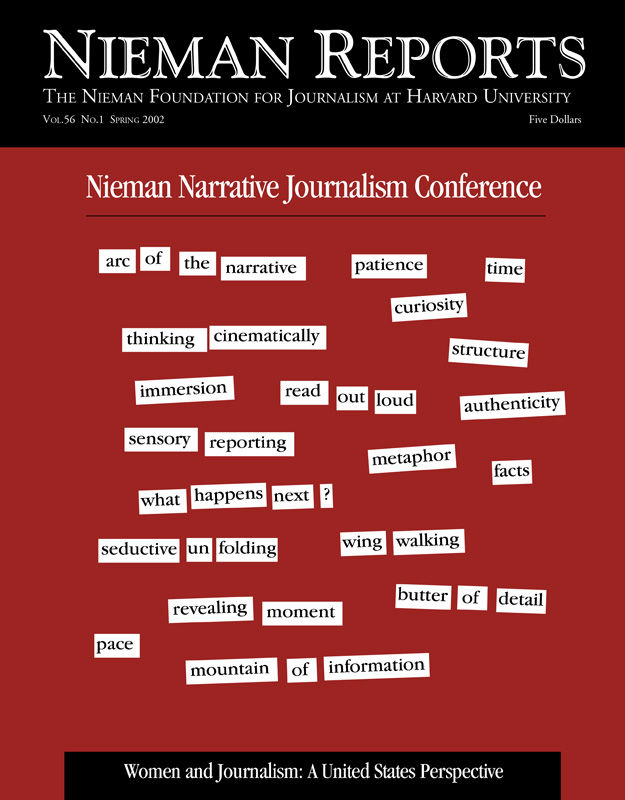In our last issue of Nieman Reports, journalists from many countries wrote about the contemporary experiences of women journalists. They examined the circumstances women encounter in newsrooms and the impact they have on coverage of the news.
In this issue, women journalists in the United States write through the prism of their experiences. Christy C. Bulkeley, a former newpaper reporter, editor and publisher who is now part of a research group compiling and updating benchmark research about women in journalism, opens this section with an instructive roadmap for understanding what has happened and its meaning for women and the news organizations they work for.
Susan Reed, a former news producer for CBS News who writes frequently about women and work, reminds us that gender disparities in pay are still part of the news business, as they are in other professions. And she urges journalists to turn their investigative techniques on themselves. By doing so, she argues, “we could begin to challenge the assumptions that women have already ‘made it’ and little more needs to change.”
Beth Harpaz covered Hillary Rodham Clinton’s senatorial campaign for The Associated Press and then wrote a book, “The Girls in the Van,” about the experience. “We were no longer the boys on the bus,” she writes, “We were the girls in the van.” She brings us along to see how coverage and conversation change when the journalists are women.
Jodi Enda, White House correspondent for Knight Ridder newspapers and president of the Journalism & Women Symposium (JAWS), applauds the progress made since the 1970’s, when women journalists found relief in the courts for issues left unresolved in newsrooms. Though “we no longer sit in the balcony,” she writes, “neither do we have the best seats in the house.” More women editors are needed, she writes, for without them “it is tougher for women reporters to…get issues they see as important into print.”
Florence George Graves, a freelance journalist who broke the story about Senator Bob Packwood’s sexual misconduct, applies the knowledge gained from her reporting to help clarify why “some aspects of what for decades the press has defined as the ‘private lives’ of public officials, when reported responsibly, are not only of legitimate public interest but also important to pursue and publish.” She describes the role women journalists have played in redefining this difficult terrain.
Rita Henley Jensen, who is editor in chief of Women’s Enews, describes why this Web-based news service exists, how it operates, and whether it will survive. It is, she writes, “an exercise in optimism,” as each day it attempts to spark media interest in an aspect of news involving women’s lives that mainstream media will have ignored. The goal: “that tiny Women’s Enews could be an agent of change for other, larger media.”
Jane Daugherty was the founding editor of the Detroit Free Press’s ongoing Children First campaign, in which the paper focused “hard news” reporting on children and their families and made that coverage prominent. She writes about the instrumental role many women journalists played in the formation of the children and family beats.


